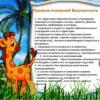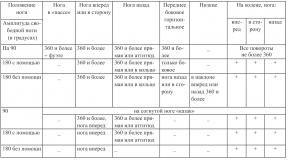Steven Strogatz - The Pleasure of X. A fascinating journey into the world of mathematics from one of the best teachers in the world. Is it possible to enjoy x
One day in May last year, I was sitting as an assistant on a math test in 10th grade. Bored, I took the “extra” version of the work from the teacher’s table and began to solve it. The work was done in the Unified State Exam format in mathematics, which I finished studying back in 1989, after graduating from high school. However, without much effort I managed to solve 11 tasks in part B- more than many who wrote the paper that day. One of the students +Yulia Soboleva , watched with surprise as I decided, and then came up to me:
— This is the first time I have seen an assistant who is not a math teacher sit and solve. Sorry for the question, but has this been useful to you in any way in your life?
The tenth grader’s question did not stump me. The fact is that with mathematics at school I had a love without reciprocity: in the sense that mathematics loved me, and I loved her.- No. That is, mathematics was always easy for me, there were no problems, I also remember all my mathematics teachers with warmth... But I didn’t like mathematics, and that’s all! This is how it happens. And, having entered a humanitarian university (I am a history teacher by training), I suddenly began to acutely feel the lack of mathematics. It began to seem to me that I was becoming stupid by leaps and bounds. And therefore, at 1— In 2 years, to fill this void, I myself (!) took and solved collections of Olympiad problems, and solved the entire textbook for the senior year in a new way. AND- oh, miracle! Clarity of mind and logical thinking began to gradually return. And then, already in the 3rd year,I read L. Carroll's book "The Logic Game" (thanks Sergei Mikhelson), I became interested in logic and the need to study mathematics somehow disappeared. And when, a couple of years after graduation, I started teaching economics, mathematics became firmly established in my mind.- Problems need to be solved somehow.
Why did I write all this? Such a long preface is intended to explain why I gladly accepted the offer +Natalia Shanina, assistant project manager of the publishing house +Mann, Ivanov and Ferber, take the book “The Pleasure of X” for review (such a verbal pun).
I liked the book from the first pages: I love it when they show beauty mathematics. I also love it when there are patterns in simple things. Therefore, already in the first chapter, I was shocked by the discovery: if we add odd numbers in succession, then in the sum we will get the squares of numbers corresponding to the number of odd numbers taken in the series. Then- that odd numbers form corners from which you can make a square, like this, for example:
As I read the book, I made new discoveries for myself. Having a love for different algorithms (I strive to derive an algorithm even in some creative and near-creative processes), I could not help but notice a simple algorithm for squaring numbers up to 50. I liked it so much that I even sketched it in a notebook.

The geometric method of solving quadratic equations delighted me: I never seemed to have difficulty solving them, but, meanwhile, the discriminant and root formulas seemed somewhat abstract. But if you add geometry, everything becomes obvious and understandable.
What about the tasks? Oh, these tasks that require not so much mathematics as logic and attentiveness. Who among you has not encountered problems like: “If you turn on a cold water tap, the bathtub will fill in half an hour; if you turn on a hot water tap, it will fill in an hour. How long will it take to fill the bathtub when both taps are turned on?” The apparent simplicity of the task usually leads to the answer “45 minutes.” The answer, of course, is incorrect. But can you explain why the correct answer is- "20 minutes"? And do it in different ways? But the author of the book does it brilliantly.
Even reading those sections of the book that turned out to be difficult for me (well, I don’t remember mathematics to such an extent) was easy. I didn’t understand everything, but I enjoyed reading it in this case too. Because the author sees in everything the concrete application of mathematical laws in the surrounding reality. Statistics, oncology, even choosing a marriage partner—there are traces of mathematics everywhere. And this quote especially touched me: “Back in the days before Google existed, searching the web was a hopeless endeavor.”.
Only two things bothered me while reading.
- Well, I don’t like reading in electronic format. Moreover, in the case of mathematics, you immediately want to solve/calculate something. If I were reading a paper book, I would write directly on the margins and free pages - books from the publishing house +Mann, Ivanov and Ferber published in such a way that they initially assume that there will be readers who will not only read the book, but also write in it.
- The book contains a large number of notes. The publisher traditionally leaves only links with brief information in the text of the book, and makes detailed notes in the form of endnotes. For me, this reading format is inconvenient (and in electronic format it is doubly inconvenient). I don't like jumping back and forth through the book. And reading the notes after reading the main text is illogical. In the end I just looked through them with my eyes. Although they deserve to be part of the main text: they are written interestingly, in the same style as the text of the book.
I would recommend this book not only to mathematics lovers, but also to high school and college students. To provide an understanding of some things that seem too abstract in a school or university course. Well, and math teachers, of course. Here +Natalia Lvova I've already read (review). I would really like to recommend this book and +Diana Sonina, but - alas and ah! — the daughter follows the same path as her mother. Mathematics is easy, she is a winner of the municipal Olympiad, and what they do with their mathematics teacher with degrees in research work (with whom she has won prizes more than onceat various conferences), solving Olympiad problems for high school students, is difficult for me to understand. But at the same time he doesn’t even want to hear about mathematics. Necessary- he does, but without pleasure.Meanwhile, when answering my student’s question about how mathematics has been useful to me in life, in addition to some pragmatic things, I always have an answer in store: you need to study well at school, including in order to be able to help your own children study. But my daughter doesn’t really need my help.- she copes on her own. Therefore, the question remains open: why, given excellent starting conditions - a good teacher, good abilities in the subject, are there children who do not like mathematics? I was discussing this the other day with +Marina Kurvits, I’m ready to discuss this with other “mathematician acquaintances” -+Jüri Kurvits And +Ljudmilla Rozhdestvenskaja. What is the reason? I nIs it necessary to somehow change the situation? For me it was resolved in my youth. But I am still haunted by the thought that, having not fallen in love with mathematics earlier, I missed some opportunities in my life...
Buy a book on Ozone >>>
Buy a book in the Labyrinth >>>
Information about the book on the publisher's website >>>
How useful are numbers for studying the world around us, what is the beauty of geometry, how elegant are integral numbers and how important is statistics? Steven Strogatz talks about all this in his book The Pleasure of X. The author explains fundamental mathematical ideas simply and elegantly, providing examples that everyone can understand. the site publishes one of the chapters of the book published by Mann, Ivanov and Ferber.
Statistics suddenly became a trendy field. With the advent of the Internet, e-commerce, social networks, the human genome project, and the development of digital culture in general, the world has become overwhelmed with data. Marketers study our tastes and habits. Intelligence agencies collect information about our location, emails and phone calls. Sports statisticians juggle numbers to decide which players to buy, who to draft, and who to bench. Everyone strives to connect the dots into a graph and discover a pattern in a jumbled collection of data.
It is not surprising that these trends are reflected in teaching. “Let's look at the statistics,” admonishes Greg Mankiw, an economist at Harvard University, in a New York Times column.
“The high school math curriculum spends too much time on traditional topics like Euclidean geometry and trigonometry. These mental exercises, useful for the average person, are, however, of little use in everyday life. Students would benefit greatly from learning more about probability and statistics.” David Brooks goes even further. In his article on disciplines that deserve attention to obtain a decent education, he writes: “Take statistics. You’ll see, it turns out that knowing what standard deviation is will be very useful to you in life.”
Quite likely, and it’s also a good idea to understand what distribution is. This is the first thing I intend to talk about. And I would like to focus on it, because this is one of the main lessons of statistics: things seem hopelessly random and unpredictable when viewed individually, but taken together they reveal a pattern and predictability.
You may have seen a demonstration of this principle in a science museum (if not, videos can be found online). A typical exhibit is a contraption called a Galton board, which is somewhat reminiscent of a pinball machine without the flippers. Inside it, there are even rows of pins at regular intervals.
Galton's board
The experiment begins with hundreds of balls being launched into the top of a Galton board. As they fall, they collide with the pins and are equally likely to bounce to the right or to the left, and then are distributed at the bottom of the board, falling into compartments of the same width. The height of a column of balls shows how likely the ball is to end up in a given location. Most of the balls are placed approximately in the middle, there are fewer on the sides, and even fewer on the edges.
In general, the picture is extremely predictable: the balls always form a bell-shaped distribution, although it is impossible to predict where each individual ball will end up.
How do individual accidents turn into general patterns? But this is how chance works. The middle column contains the most balls because, before rolling down, many of them will make approximately the same number of jumps to the right and left and, as a result, end up somewhere in the middle. Several lonely balls located at the edges form the tails of the distribution - these are those balls that, when colliding with the pins, always bounced in the same direction. Such bounces are unlikely, which is why there are so few balls at the edges.
Just as the location of each ball is determined by the sum of many random events, many phenomena in this world are the result of many small circumstances and also obey a bell-shaped curve. Insurance companies operate on this principle. They can accurately estimate the number of their clients who die each year. However, they don’t know who exactly will be unlucky this time.
Or take, for example, human height. It depends on countless accidents related to genetics, biochemistry, nutrition and the environment. Therefore, there is a good chance that, when considered together, the heights of adult men and women will form a bell-shaped curve.
In a blog post called "Misthings People Tell About Themselves Online," dating site OkCupid's statistics service recently published a graph of the growth of its clients, or rather their self-reported values. It was found that the growth rates of both sexes, as expected, form a bell-shaped curve. What is surprising, however, is that both distributions were shifted about two inches to the right of expected values.

Strogatz S. Pleasure from H. - M.: Mann, Ivanov and Ferber, 2014.
So either the customers surveyed by OkCupid are taller than average or they add a couple more inches to their height when describing themselves online.
An idealized version of such bell curves is what mathematicians call the normal distribution. This is one of the most important concepts in statistics, which has a theoretical basis. It can be proven that a normal distribution occurs when a large number of small random factors are added together, each of them acting independently of the others. And many events happen this way.
But not all. And this is the second point that I would like to draw attention to. The normal distribution is not as ubiquitous as it seems. For hundreds of years, and especially in the last few decades, scientists and statisticians have noted the existence of many phenomena that deviate from this curve and follow their own schedule. It is curious that such types of distributions are practically not mentioned in textbooks on elementary statistics, and if they are found, they are usually considered as some kind of pathology.
This is weird. I will try to explain that many phenomena of modern life become more meaningful if these "pathological" distributions are understood. This is the new normal. Take, for example, the distribution of city sizes in the United States. Rather than clustering around some average bell curve, the vast majority of cities are small in size and therefore cluster on the left side of the graph.

Strogatz S. Pleasure from H. - M.: Mann, Ivanov and Ferber, 2014.
And the larger the population of a city, the less common such cities are. In other words, in the aggregate the distribution will be more of an L-shaped curve than a bell-shaped curve.
And this is not surprising. Everyone knows that there are much fewer megacities than small cities. Although it's not so obvious, city sizes follow a nice simple distribution - when you look at them on a logarithmic scale.
We will assume that the difference between two cities is the same if their population differs by the same number of times (just as any two piano keys separated by an octave always differ by half in frequency). And let's do the same on the vertical axis.

Strogatz S. Pleasure from H. - M.: Mann, Ivanov and Ferber, 2014.
The data now lies on a curve that is an almost perfect straight line. Based on the properties of logarithms, it is easy to deduce that the original L-shaped curve is a power-law dependence, which is described by a function of the form
where x is the population of the city, y is the number of cities of this size, c is a constant, and the exponent a (power-law exponent) determines the negative slope of the straight line.
Power distributions have some illogical properties from the point of view of traditional statistics. For example, unlike a normal distribution, their modes, medians, and means do not coincide due to the skewed, asymmetrical shape of L-shaped curves.
President Bush benefited greatly from this, saying in 2003 that tax cuts saved each family an average of $1,586. Although this is mathematically correct, he took advantage of the average deduction, which hid huge deductions of hundreds of thousands of dollars received by the richest 0.1% of the country's population. It is known that the tail on the right side of the income distribution follows a power law, and in such a situation, using the average is misleading because it is far from its real value. In reality, most families received less than $650 back. In this distribution, the median is significantly less than the mean.
This example demonstrates a crucial property of power law distributions: they have heavy tails compared to at least the small liquid tails of a normal distribution. Large tails like this, although rare, are more common in data distributions than regular bell-shaped curves.
On Black Monday, October 19, 1987, the Dow Jones Industrial Average fell 22%. Compared to the usual level of volatility in the stock market, this drop was more than twenty standard deviations. According to traditional statistics (which uses the normal distribution), such an event is almost impossible: its probability is less than one in 100,000,000,000,000,000,000,000,000,000,000,000,000,000,000,000,000 (10 to the 50th power). However, this happened - because price fluctuations in the stock market did not follow a normal distribution.
Heavy-tailed distributions are better suited to describe them. This happens with earthquakes, fires and floods, making it difficult for insurance companies to manage risk.
The same mathematical model describes the death toll from wars and terrorist attacks, as well as other, much more peaceful things, such as the number of words in a novel or the number of sexual partners a person has.
Although the adjectives used to describe long tails do not paint them in a very favorable light, tailed distributions wear their tails proudly. Fat, heavy and long? Yes it is. But in this case, show me which one is normal?
Jul 25, 2017The Pleasure of X. A fascinating journey into the world of mathematics from one of the best teachers in the world Stephen Strogatz
(No ratings yet)
 Title: The Pleasure of X. A fascinating journey into the world of mathematics from one of the best teachers in the world
Title: The Pleasure of X. A fascinating journey into the world of mathematics from one of the best teachers in the world
About the book “The Pleasure of X: A Fascinating Journey into the World of Mathematics from One of the Best Teachers in the World” by Stephen Strogatz
This book can radically change your attitude towards mathematics. It consists of short chapters, in each of which you will discover something new. You will learn how useful numbers are for studying the world around you, you will understand the beauty of geometry, you will become acquainted with the grace of integral calculus, you will be convinced of the importance of statistics and you will come into contact with infinity. The author explains fundamental mathematical ideas simply and elegantly, with brilliant examples that everyone can understand.
Published in Russian for the first time.
On our website about books lifeinbooks.net you can download for free without registration or read online the book “The Pleasure of X. A fascinating journey into the world of mathematics from one of the best teachers in the world” by Stephen Strogatz in epub, fb2, txt, rtf, pdf formats for iPad, iPhone, Android and Kindle. The book will give you a lot of pleasant moments and real pleasure from reading. You can buy the full version from our partner. Also, here you will find the latest news from the literary world, learn the biography of your favorite authors. For aspiring writers, there is a separate section with useful tips and tricks, interesting articles, thanks to which you yourself can try your hand at literary crafts.
This book is well complemented by:
Quanta
Scott Patterson
Brainiac
Ken Jennings
Moneyball
Michael Lewis
Flexible consciousness
Carol Dweck
Physics of the stock market
James Weatherall
The Joy of X
A Guided Tour of Math, from One to Infinity
Stephen Strogatz
The pleasure of X
A fascinating journey into the world of mathematics from one of the best teachers in the world
Information from the publisher
Published in Russian for the first time
Published with permission from Steven Strogatz, c/o Brockman, Inc.
Strogatz, P.
The pleasure of X. A fascinating journey into the world of mathematics from one of the best teachers in the world / Stephen Strogatz; lane from English - M.: Mann, Ivanov and Ferber, 2014.
ISBN 978-500057-008-1
This book can radically change your attitude towards mathematics. It consists of short chapters, in each of which you will discover something new. You will learn how useful numbers are for studying the world around you, you will understand the beauty of geometry, you will become acquainted with the grace of integral calculus, you will be convinced of the importance of statistics and you will come into contact with infinity. The author explains fundamental mathematical ideas simply and elegantly, with brilliant examples that everyone can understand.
All rights reserved.
No part of this book may be reproduced in any form without the written permission of the copyright holders.
Legal support for the publishing house is provided by the Vegas-Lex law firm.
© Steven Strogatz, 2012 All rights reserved
© Translation into Russian, publication in Russian, design. Mann, Ivanov and Ferber LLC, 2014
Preface
I have a friend who, despite his craft (he is an artist), is passionate about science. Whenever we get together, he talks enthusiastically about the latest developments in psychology or quantum mechanics. But as soon as we start talking about mathematics, he feels a trembling in his knees, which greatly upsets him. He complains that not only do these strange mathematical symbols defy his understanding, but sometimes he doesn't even know how to pronounce them.
In fact, the reason for his rejection of mathematics is much deeper. He will have no idea what mathematicians do in general and what they mean when they say that a given proof is elegant. Sometimes we joke that I just need to sit down and start teaching him from the very basics, literally 1 + 1 = 2, and go as deep into math as he can.
And although this idea seems crazy, this is exactly what I will try to implement in this book. I will guide you through all the major branches of science, from arithmetic to higher mathematics, so that those who wanted a second chance can finally take advantage of it. And this time you won't have to sit at a desk. This book will not make you a math expert. But it will help you understand what this discipline studies and why it is so fascinating for those who understand it.
We'll explore how Michael Jordan's slam dunks can help explain basic calculus. I'll show you a simple and amazing way to understand the fundamental theorem of Euclidean geometry - the Pythagorean Theorem. We'll try to get to the bottom of some of life's mysteries, big and small: did Jay Simpson kill his wife; how to reposition a mattress so that it lasts as long as possible; how many partners need to be changed before getting married - and we will see why some infinities are larger than others.
Mathematics is everywhere, you just need to learn to recognize it. You can see the sine wave on the zebra's back, hear echoes of Euclid's theorems in the Declaration of Independence; what can I say, even in the dry reports that preceded the First World War, there are negative numbers. You can also see how new areas of mathematics influence our lives today, for example, when we search for restaurants using the computer or try to at least understand, or better yet, survive the frightening fluctuations of the stock market.
A series of 15 articles under the general title “Fundamentals of Mathematics” appeared online at the end of January 2010. In response to their publication, letters and comments poured in from readers of all ages, including many students and teachers. There were also simply curious people who, for one reason or another, “lost their way” in understanding mathematical science; now they felt that they had missed something O great, and would like to try again. I was especially pleased by the gratitude from my parents because, with my help, they were able to explain mathematics to their children, and they themselves began to understand it better. It seemed that even my colleagues and comrades, ardent admirers of this science, enjoyed reading the articles, except for those moments when they vied with each other to offer all sorts of recommendations for improving my brainchild.
Despite popular belief, there is a clear interest in mathematics in society, although little attention is paid to this phenomenon. All we hear about is fear of math, and yet many would love to try to understand it better. And once this happens, it will be difficult to tear them away.
This book will introduce you to the most complex and advanced ideas from the world of mathematics. The chapters are small, easy to read and not particularly dependent on each other. Among them are those included in that first series of articles in the New York Times. So, as soon as you feel a slight mathematical hunger, don’t hesitate to pick up the next chapter. If you want to understand the issue that interests you in more detail, then at the end of the book there are notes with additional information and recommendations on what else you can read about it.
For the convenience of readers who prefer a step-by-step approach, I have divided the material into six parts in accordance with the traditional order of studying topics.
Part I, Numbers, begins our journey with arithmetic in kindergarten and primary school. It shows how useful numbers can be and how magically effective they are in describing the world around us.
Part II, “Ratios,” shifts attention from the numbers themselves to the relationships between them. These ideas lie at the heart of algebra and are the first tools for describing how one thing affects another, showing the cause-and-effect relationship of a variety of things: supply and demand, stimulus and response - in short, all the kinds of relationships that make the world so rich and varied .
Part III “Figures” tells not about numbers and symbols, but about figures and space - the domain of geometry and trigonometry. These topics, along with the description of all observable objects through shapes, logical reasoning and proof, take mathematics to a new level of precision.
In Part IV, Time for a Change, we'll look at calculus, the most exciting and diverse branch of mathematics. Calculus makes it possible to predict the trajectory of planets, the cycles of tides and make it possible to understand and describe all periodically changing processes and phenomena in the Universe and within us. An important place in this part is given to the study of infinity, the pacification of which became a breakthrough that allowed calculations to work. Computing helped solve many problems that arose in the ancient world, and this ultimately led to a revolution in science and the modern world.
Part V, “The Many Faces of Data,” deals with probability, statistics, networks, and data science—still relatively new fields, born out of the less-always orderly aspects of our lives, such as opportunity and luck, uncertainty, risk, variability, chaos, interdependence. Using the right tools of mathematics and the appropriate types of data, we will learn to detect patterns in the flow of randomness.
At the end of our journey in Part VI, “The Limits of the Possible,” we will approach the limits of mathematical knowledge, the border region between what is already known and what is as yet elusive and unknown. We will again go through the topics in the order we are already familiar with: numbers, ratios, figures, changes and infinity - but at the same time we will look at each of them in more depth, in its modern incarnation.
The Joy of X
A Guided Tour of Math, from One to Infinity
Published with permission from Steven Strogatz, c/o Brockman, Inc.
© Steven Strogatz, 2012 All rights reserved
© Translation into Russian, publication in Russian, design. Mann, Ivanov and Ferber LLC, 2014
All rights reserved. No part of the electronic version of this book may be reproduced in any form or by any means, including posting on the Internet or corporate networks, for private or public use without the written permission of the copyright owner.
Legal support for the publishing house is provided by the Vegas-Lex law firm.
* * *
This book is well complemented by:
Quanta
Scott Patterson
Brainiac
Ken Jennings
Moneyball
Michael Lewis
Flexible consciousness
Carol Dweck
Physics of the stock market
James Weatherall
Preface
I have a friend who, despite his craft (he is an artist), is passionate about science. Whenever we get together, he talks enthusiastically about the latest developments in psychology or quantum mechanics. But as soon as we start talking about mathematics, he feels a trembling in his knees, which greatly upsets him. He complains that not only do these strange mathematical symbols defy his understanding, but sometimes he doesn't even know how to pronounce them.
In fact, the reason for his rejection of mathematics is much deeper. He will have no idea what mathematicians do in general and what they mean when they say that a given proof is elegant. Sometimes we joke that I just need to sit down and start teaching him from the very basics, literally 1 + 1 = 2, and go as deep into math as he can.
And although this idea seems crazy, this is exactly what I will try to implement in this book. I will guide you through all the major branches of science, from arithmetic to higher mathematics, so that those who wanted a second chance can finally take advantage of it. And this time you won't have to sit at a desk. This book will not make you a math expert. But it will help you understand what this discipline studies and why it is so fascinating for those who understand it.
To clarify what I mean by the lives of numbers and their behavior that we cannot control, let's go back to the Furry Paws Hotel. Suppose that Humphrey was just about to hand over the order, but then the penguins from another room unexpectedly called him and also asked for the same amount of fish. How many times must Humphrey shout the word "fish" after receiving two orders? If he didn't learn anything about numbers, he would have to scream as many times as there are penguins in both rooms. Or, using numbers, he could explain to the cook that he needed six fish for one number and six for another. But what he really needs is a new concept: addition. Once he's mastered it, he'll proudly say that he needs six plus six (or, if he's a poser, twelve) fish.
This is the same creative process as when we first came up with numbers. Just as numbers make counting easier than listing one at a time, addition makes it easier to calculate any amount. At the same time, the one who does the calculation develops as a mathematician. Scientifically, this idea can be formulated as follows: using the right abstractions leads to deeper insight into the essence of the issue and greater power in solving it.
Soon, perhaps, even Humphrey will realize that now he can always count.
However, despite such an endless perspective, our creativity always has some limitations. We can decide what we mean by 6 and +, but once we do, the results of expressions like 6 + 6 are beyond our control. Here logic will leave us no choice. In this sense, mathematics always includes both invention, so and opening: we invent concept, but open their consequences. As the following chapters will make clear, in mathematics our freedom lies in the ability to ask questions and persist in seeking answers without having to invent them ourselves.
2. Stone arithmetic
Like any phenomenon in life, arithmetic has two sides: formal and entertaining (or playful).
We studied the formal part at school. There they explained to us how to work with columns of numbers, adding and subtracting them, how to crunch them when doing calculations in spreadsheets when filling out tax returns and preparing annual reports. This side of arithmetic seems important to many from a practical point of view, but completely joyless.
You can become acquainted with the entertaining side of arithmetic only in the process of studying higher mathematics. However, it is as natural as a child's curiosity.
In the essay "The Mathematician's Lament," Paul Lockhart suggests studying numbers in more concrete examples than usual: he asks us to think of them as a number of stones. For example, the number 6 corresponds to the following set of pebbles:

You are unlikely to see anything unusual here. The way it is. Until we start manipulating the numbers, they look pretty much the same. The game begins when we receive a task.
For example, let's look at sets that contain from 1 to 10 stones and try to make squares out of them. This can only be done with two sets of 4 and 9 stones, since 4 = 2 × 2 and 9 = 3 × 3. We get these numbers by squaring some other number (that is, arranging the stones in a square).

Here is a problem that has a larger number of solutions: you need to find out which sets will form a rectangle if you arrange the stones in two rows with an equal number of elements. Sets of 2, 4, 6, 8 or 10 stones are suitable here; the number must be even. If we try to arrange the remaining sets with an odd number of stones in two rows, we will invariably end up with an extra stone.

But all is not lost for these awkward numbers! If you take two such sets, then the extra elements will find a pair, and the sum will be even: odd number + odd number = even number.

If we extend these rules to numbers after 10, and assume that the number of rows in a rectangle can be more than two, then some odd numbers will allow such rectangles to be added. For example, the number 15 can form a 3 × 5 rectangle.

Therefore, although 15 is undoubtedly an odd number, it is a composite number and can be represented as three rows of five stones each. Likewise, any entry in the multiplication table produces its own rectangular group of pebbles.
But some numbers, like 2, 3, 5 and 7, are completely hopeless. You can't lay out anything from them except to arrange them in the form of a simple line (one row). These strange stubborn people are the famous prime numbers.
So we see that numbers can have weird structures that give them a certain character. But to understand the full range of their behavior, you need to step back from individual numbers and observe what happens during their interaction.
For example, instead of adding just two odd numbers, let's add all possible sequences of odd numbers, starting with 1:
1 + 3 + 5 + 7 = 16
1 + 3 + 5 + 7 + 9 = 25
Surprisingly, these sums always turn out to be perfect squares. (We already said that 4 and 9 can be represented as squares, and for 16 = 4 × 4 and 25 = 5 × 5 this is also true.) A quick calculation shows that this rule is also true for larger odd numbers and , apparently, tends to infinity. But what is the connection between odd numbers with their “extra” stones and the classically symmetrical numbers that form squares? By placing the pebbles correctly, we can make it obvious, which is the hallmark of an elegant proof.
The key to it is the observation that odd numbers can be represented as equilateral angles, the successive overlap of which forms a square!

A similar way of reasoning is presented in another recently published book. Yoko Ogawa's charming novel The Housekeeper and the Professor tells the story of a shrewd but uneducated young woman and her ten-year-old son. A woman was hired to care for an elderly mathematician whose short-term memory, due to a traumatic brain injury, only retains information about the last 80 minutes of his life. Lost in the present, alone in his squalid cottage, with nothing but numbers, the professor tries to communicate with the housekeeper the only way he knows: by asking about her shoe size or date of birth and making small talk with her about her expenses. The professor also takes a special liking to the housekeeper's son, whom he calls Ruth (Root) because the boy has a flat head on top, and this reminds him of the mathematical notation for the square root √.
One day, the professor gives the boy a simple task - to find the sum of all the numbers from 1 to 10. After Ruth carefully adds all the numbers together and returns with the answer (55), the professor asks him to look for an easier way. Will he be able to find the answer? without ordinary addition of numbers? Ruth kicks a chair and screams, “It’s not fair!”
Little by little, the housekeeper also gets drawn into the world of numbers and secretly tries to solve this problem herself. “I don’t understand why I’m so interested in a children’s puzzle that has no practical use,” she says. “At first I wanted to please the professor, but gradually this lesson turned into a battle between me and the numbers. When I woke up in the morning, the equation was already waiting for me:
1 + 2 + 3 + … + 9 + 10 = 55,
and it followed me around all day, as if it was burned into the retinas of my eyes, and there was no way I could ignore it.” There are several ways to solve the professor's problem (I wonder how many you can find). The professor himself suggests a method of reasoning, which we have already applied above. He interprets the sum from 1 to 10 as a triangle of pebbles, with one pebble in the first row, two in the second, and so on, up to ten pebbles in the tenth row.

This picture gives a clear idea of negative space. It turns out that it is only half full, which shows the direction of the creative breakthrough. If you copy a triangle of pebbles, flip it over and combine it with an existing one, you get something very simple: a rectangle with ten rows of 11 pebbles each, for a total of 110 stones.

Since the original triangle is half of this rectangle, the calculated sum of the numbers from 1 to 10 must be half of 110, that is, 55.
Representing a number as a group of pebbles may seem unusual, but it is actually as old as mathematics itself. The word "calculate" calculate) reflects this heritage and is derived from Latin calculus, meaning "pebble", which the Romans used when performing calculations. You don't have to be an Einstein (which means "one stone" in German) to enjoy manipulating numbers, but maybe being able to juggle pebbles will make it easier for you.
A slam dunk is a type of basketball shot in which a player jumps up and throws the ball through the hoop from top to bottom with one or two hands. Note translation
Jay Simpson is a famous American football player. He played the role of Detective Northberg in the famous “Naked Gun” trilogy. He was accused of murdering his ex-wife and her friend and was acquitted despite the evidence. Note translation
For the fascinating idea that numbers have a life of their own and that mathematics can be seen as an art form, see P. Lockhart, A Mathematician's Lament (Bellevue Literary Press, 2009). Note ed.: There are many translations of Lockhard’s essay “The Cry of a Mathematician” on the Russian Internet. Here is one of them: http://mrega.ru/biblioteka/obrazovanie/130-plachmatematika.html. Here and below, footnotes in curly brackets refer to the author's notes.
This famous phrase is taken from E. Wigner's essay The unreasonable effectiveness of mathematics in the natural sciences, Communications in Pure and Applied Mathematics, Vol. 13, No. 1, (February 1960), pp. 1–14. The online version is available at http://www.dartmouth.edu/~matc/MathDrama/reading/Wigner.html. For further thoughts on this topic, and whether mathematics was invented or discovered, see M. Livio, Is God a Mathematician? (Simon and Schuster, 2009) and R. W. Hamming, The unreasonable effectiveness of mathematics, American Mathematical Monthly, Vol. 87, No. 2 (February 1980).I owe much of this chapter to two excellent books: P. Lockhart's polemical essay, A Mathematician's Lament (Bellevue Literary Press, 2009) and Y. Ogawa's novel, The Housekeeper and the Professor (Picador, 2009). Note ed.: Lockhard’s essay “The Cry of a Mathematician” is mentioned in commentary 1. There is no translation of Yoko Ogawa’s novel into Russian yet.
For young readers who want to explore numbers and their structures, see H. M. Enzensberger, The Number Devil (Holt Paperbacks, 2000). Note ed.: Among the numerous Russian books about the beginnings of mathematics, non-standard approaches to its study, the development of mathematical creativity in children and similar topics consonant with the following chapters of the book, we will indicate the following for now: Pukhnachev Yu., Popov Yu. Mathematics without formulas. M.: JSC "Stoletie", 1995; Oster G. Problem book. Beloved guide to mathematics. M.: AST, 2005; Ryzhik V.I. 30,000 mathematics lessons: A book for teachers. M.: Education, 2003: Tuchnin N.P. How to ask a question? About mathematical creativity of schoolchildren. Yaroslavl: Verkh. - Volzh. book publishing house, 1989.
For excellent but more complex examples of visualizing mathematical images, see R. B. Nelsen, Proofs without Words (Mathematical Association of America, 1997).



















